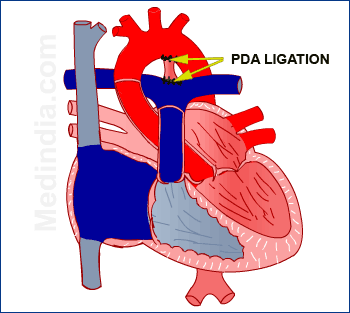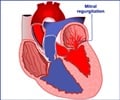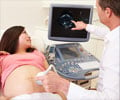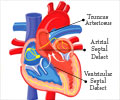Surgical Closure or Patent Ductus Arteriosus (PDA) ligation
The main purpose of PDA ligation is to prevent complications of the lungs and the heart due to increased blood flow and pressure.
This surgery does not require opening the heart. The patient is under general anesthesia during the whole procedure. For breathing - a breathing tube or endotracheal tube is inserted down the throat and is connected to a ventilator. The patient will be lie on his/her side with the right side down. The incision is made near the left armpit on the left side of the chest. A small cut is made between the ribs to open the chest cavity to reveal the PDA between the pulmonary artery and the aorta. This incision is called “Left Posterolateral Thoracotomy”. Several nerves like the vagus, phrenic and recurrent laryngeal nerves are close to the PDA shunt. The surgeon takes great care to identify and avoid any amage to these nerves. The PDA is then tied with sutures or closed with surgical clips. Tubes will be placed in the chest cavity to drain the blood and fluid produced after surgery. Then the incision will be closed with sutures, cleaned and dressed.

The patient will be then transported to the Intensive Care Unit (ICU) or Post Surgical Care Unit. Here the patient’s blood pressure, pulse, ECG etc., will be monitored continuously. Once the child is able to breathe on its own, the ventilator will be slowly weaned off. Chest tubes also will be removed when the drainage stops. Stay in the ICU is usually a day or less if there are no complications. Total hospital stay is less than a week in case of uneventful recovery.
Ligation of PDA can be done safely and effectively by a minimally invasive surgical method called “VATS or through Video-assisted thoracoscopic surgery” In this a laparoscope with video camera is used for the procedure. Three or four small keyholes are made for passing the nstruments for the procedure.








